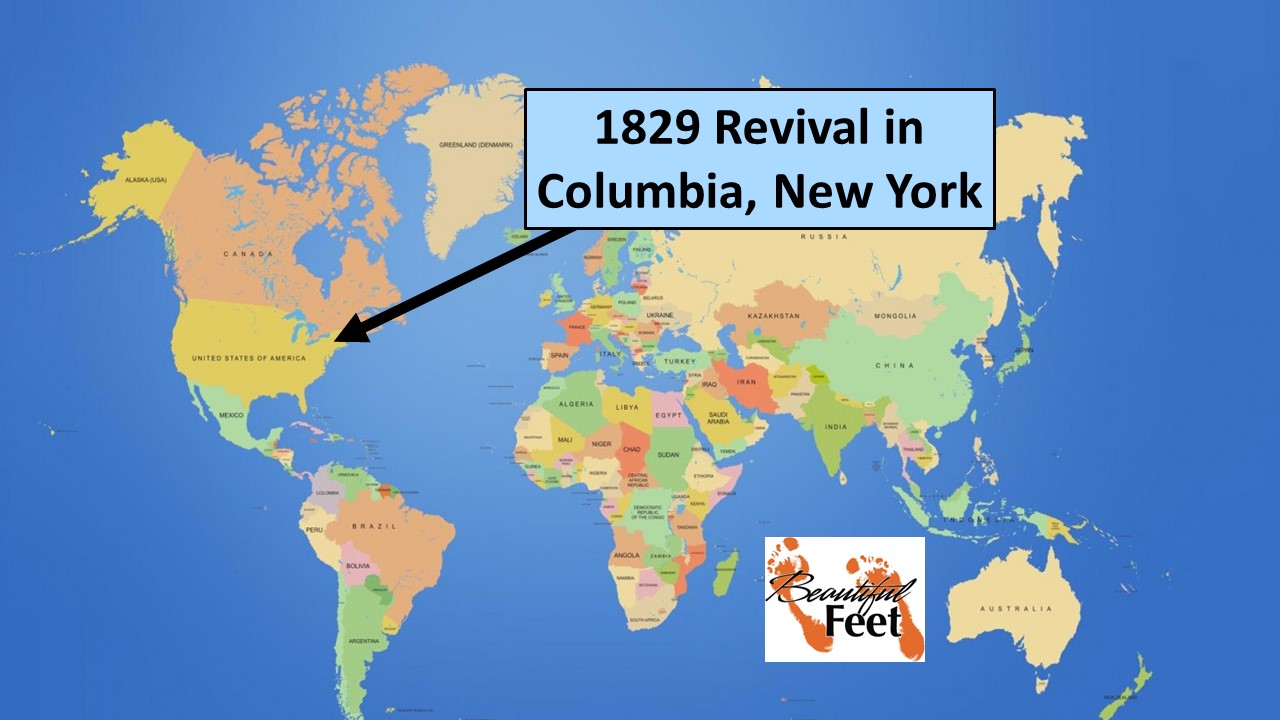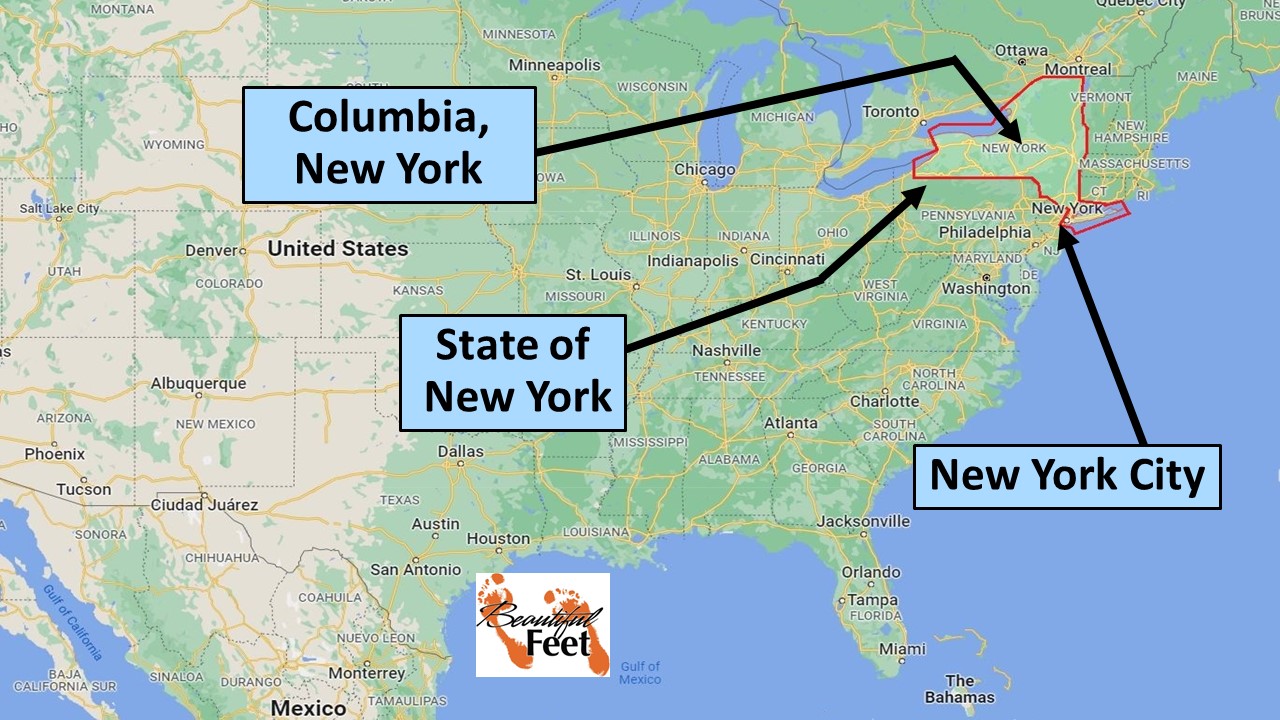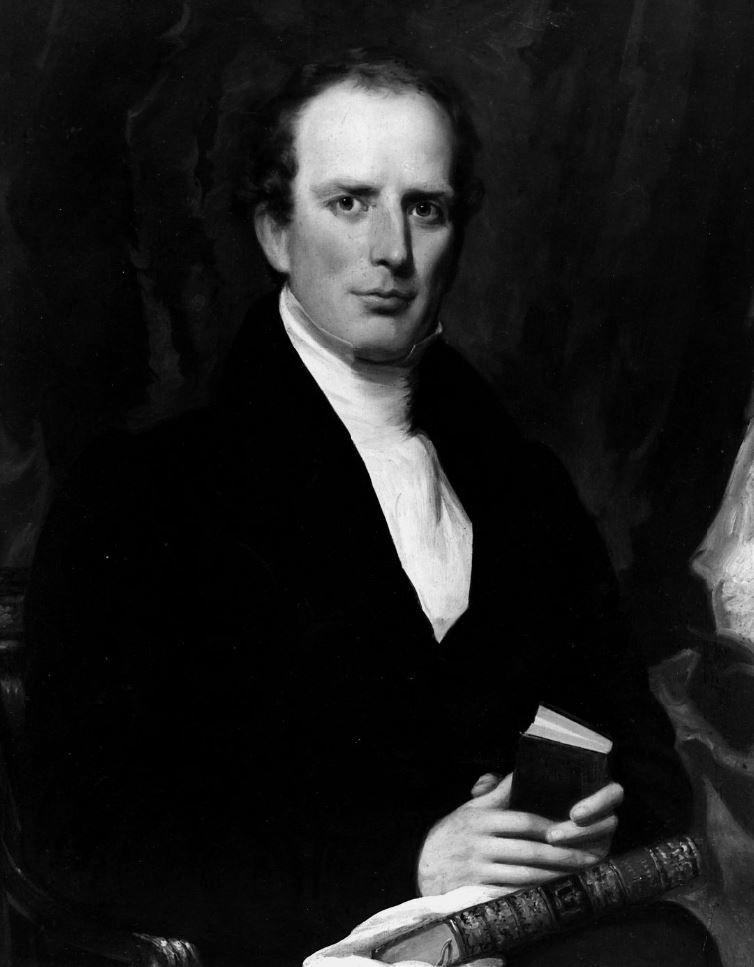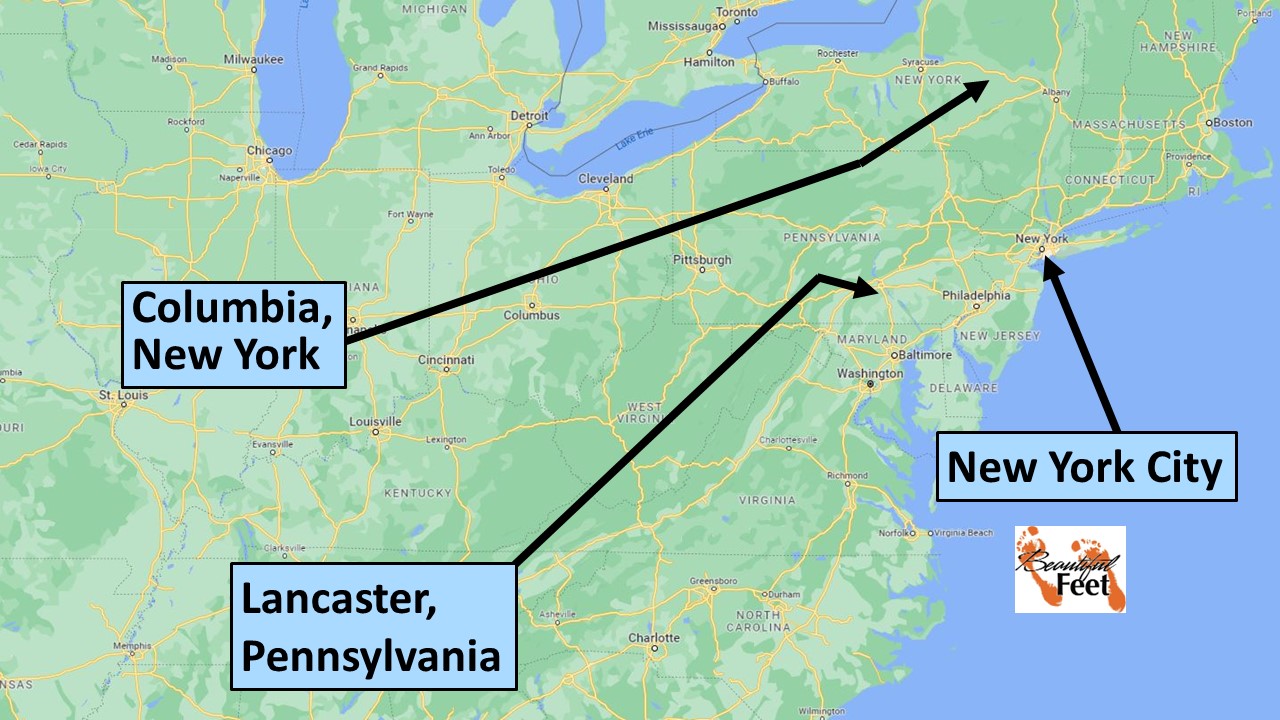1829 Columbia, New York Revival



Charles Grandison Finney – Father of modern revivalism and the leading figure of the Second Great Awakening
Introduction
Charles G. Finney’s (1792-1875) unique methods of evangelism earned him the title of the “father of modern revivalism.” His methods paved the way for other mass-evangelists, like Dwight L. Moody, R. A. Torrey, John W. Chapman, Billy Sunday, and Billy Graham, who adapted and built upon Finney’s methods.
Background Information
With this revival account being one in a sequence of revivals during the life of Charles G. Finney, we recommend first reading our accounts of the initial revivals he was involved with in the northern and central part of New York State:
► 1824 Evans Mills German Settlement Revival
► 1824 Antwerp, New York Revival
► 1824 Revival at Perch River and Other Locations
► 1825 Revival in Gouverneur, New York
► 1825 Revival in De Kalb, New York
► 1825 Revival in Western, New York
► 1825 Revival in Rome, New York
► 1826 Revival in Utica, New York
► 1826 Revival in Auburn, New York
► 1826-1827 Revival in Troy, New York
► 1827 New Lebanon & Stephentown Revivals
► 1827-1829 Revival at Wilmington and Philadelphia
► 1829 Reading, Pennsylvania Revival
► 1829 Lancaster, Pennsylvania Revival
From Lancaster to Columbia, New York
On June 15, 1829, Finney finished his work in Lancaster, Pennsylvania. He then made a visit to his in-laws’ home in Oneida County, New York, in the town of Whitestown.
The Call to Columbia
A person was sent from the Dutch Reformed Church in Columbia, New York, to go to Whitestown and invite Finney to come and assist them with the revival that was already in progress. Finney “had other pressing calls for labor,” but he went anyway, and made the trip 25 miles to the southeast to see how he could assist with the time he had available.
Finney’s Indoctrination of the Church
When Finney arrived in Columbia, the 24-year-old pastor, Jacob W. Hongin (1805-1843), of German descent, from Pennsylvania, gave him the following information about himself and the church:
► The congregation was large.
► The church membership was made up of mostly all nonconverted people.
► Like other Old School Presbyterians, the only things required for church membership was that they knew the catechism and that they abided by church rules; conversion experiences were not necessary.
► Hongin’s theology teacher did not encourage personal conversion experiences, and even warned his students against it, saying that “it was a very dangerous practice,” and anybody becoming involved with such an approach “would become insane.”
► Jacob Hongin himself confessed that he had never been converted and that he had joined the church like everyone did at the time, without any thought of needing to do anything else. Hongin’s mother, however, was a godly woman, and warned him that conversion was an absolute necessity, especially if he was to become a minister.
► The words of Hongin’s mother hung heavy on him “and his convictions of sin deepened until he was nearly in despair.”
Transformation
The young minister being weighed down with this conviction of sin finally came face-to-face with truth and was converted. He then saw that the congregation he had responsibility for was unconverted, as was his wife. Through diligent effort, his wife was soon converted, and to see the church make a major transformation, he implemented these steps:
► He committed a lot of time to read the Bible and pray, and to preach with all his energy.
► He made visits at the homes of the elders and other influential people in town, sharing about his conversion experience and that it is something required of all people. Soon a couple of the elders were converted, as well as several ladies.
Bold Step of Faith
After a lot of prayer, Hongin gave a notice on a particular Sunday that there would be a church business meeting on a certain day of the week.
Hongin’s conversion, preaching, and home visits had already stirred the community, so when the time of the business meeting came, nearly all members were present.
In both German and English, so that all could understand, Hongin spoke to the assembly, explaining how, according to their tradition, church membership was attained, and that that was all in error. He then called for the dissolution of the church and then the formation of a new one, insisting that members must first have a conversion experience.
Motion to Dissolve the Church
After Hongin’s call for the dissolving of the church, a motion was made, with another seconding it. Hongin then called for all converted members to stand, and for all others to stand, to give their agreement to the church’s dissolution. With very influential members of the church standing, all others began to stand, “till the vote was nearly or quite unanimous.” Hongin then said:
There is now no church in Columbia: and we propose to form one of Christians, of people who have been converted.

Testimony Service
Hongin then shared his conversion testimony, being followed by his wife and the converted elders. It was from that group that a new church was formed, and Hongin then spoke to those who had not yet converted:
Your church relations are dissolved. You are out in the world; and until you are converted and in the church you cannot have your children baptized, and you cannot partake of the ordinances of the church.
This barrier to communion and baptism gripped the people because they had always associated it with their hope of heaven; to not take communion was placing themselves in jeopardy.
The Revival Spread
Jacob Hongin then poured himself into his work by visiting homes, preaching, praying, and holding other meetings. As he did all these things, the level of interest increased.
This was the state of things when Finney heard from the messenger sent by Hongin, inviting Finney to come to Columbia and assist him.
When Finney arrived, he said he found in Hongin:
A warm-hearted young convert. He listened to my preaching with almost irrepressible joy.
[He] was like a little child. He was as teachable, and humble, and earnest a young convert as ever I saw.
Thorough Sweep of the Town and Beyond
As the revival spread through the town, the Gospel reached and converted nearly all the inhabitants.
The Columbia Revival continued for over one year as it spread throughout the region, reaping a large harvest.
According to The Western Recorder, a Baptist publication,
We learn that a powerful work of grace has been in progress since November last in Columbia, Herkimer County, and is now more powerful than ever. Converts aged from 11 to 80 years—infidels whose race was nearly run—have been brought to the foot of the cross.
Finney Revival Account List
Access all accounts of Finney’s revivals using this link.
Primary Sources
► Chapter XX Revivals in Columbia and New York City: The Memoirs of Charles G. Finney by Charles G. Finney
► The Memoirs of Charles G. Finney: The Complete Restored Text by Charles G. Finney
Secondary Sources
► Charles G. Finney by Wikipedia
► Charles Grandison Finney & the Second Phase of the Second Great Awakening by Christian History Institute
► Eerdman’s Handbook to Christianity in America by Mark A. Noll
► Fire From Heaven by Robert Evans
► Great Revivals and the Great Republic by Warren Candler
► Man of Like Passions: The Life Story of Charles Grandison Finney by Richard E. Day
► Memoirs of Revivals of Religion by Charles G. Finney
Return to List of Revival Stories
Chet & Phyllis Swearingen:
Office: (260) 920-8248
romans1015@outlook.com
Beautiful Feet
P.O. Box 915
Auburn, IN 46706

